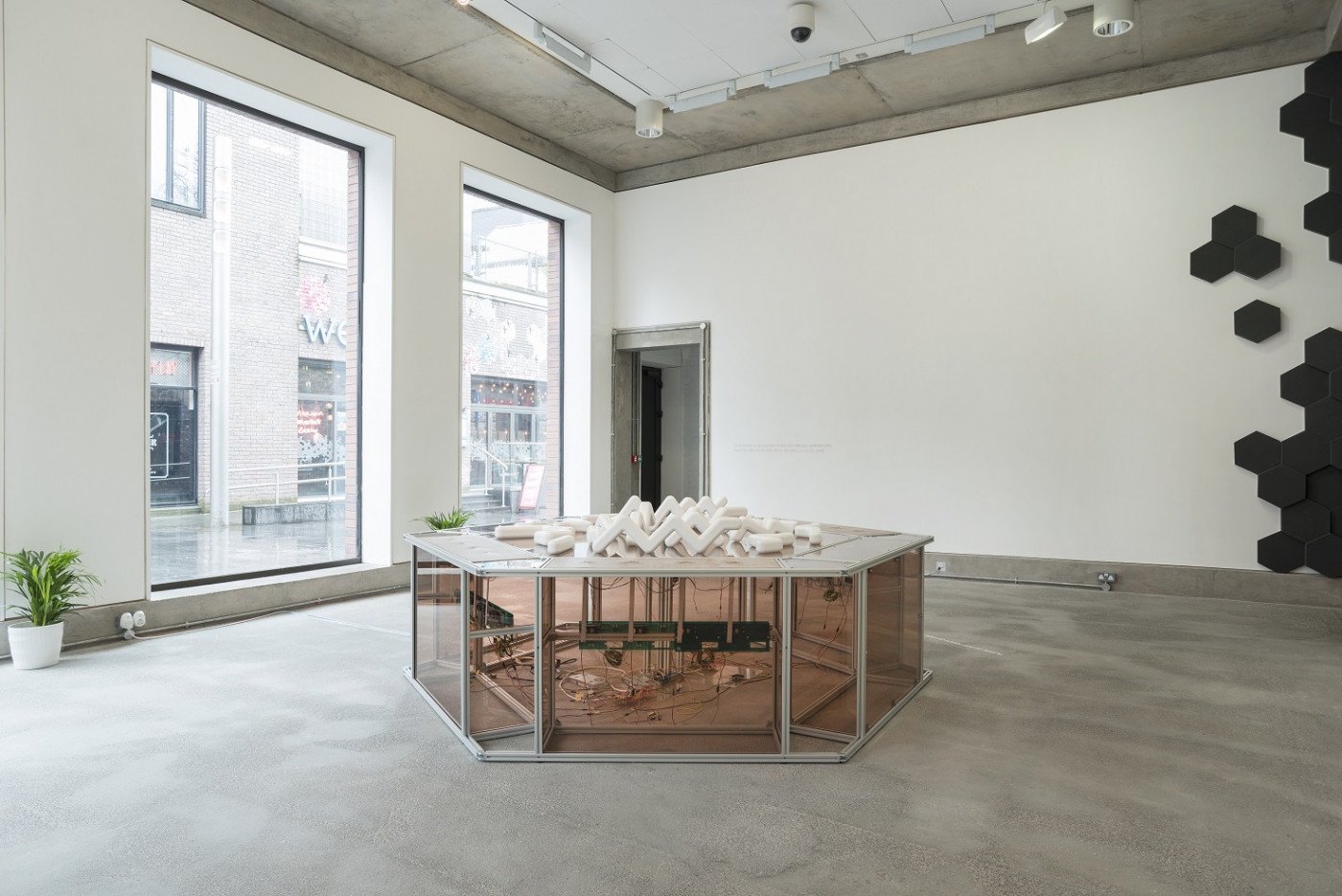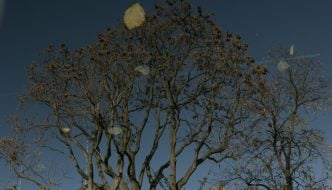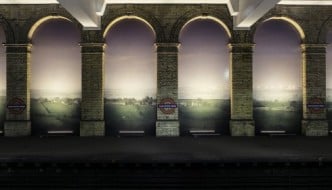
This week offers the last chance to see (or hear!) Bluecoat’s current show Euphonia. It is an immersive exhibition by British artist Emma Smith (1981), exploring the music of social communication. Euphonia demonstrates a thoughtful approach in its curation and content, which from the very beginning encourages visitors to self-reflect, heightening their connection with other visitors, the surrounding artwork and the gallery space.
Central to the show is Euphonia itself, a vocal sound installation whose score is used as a basis for the exhibition. The large open spaces of Gallery 2 are filled with the choral notes and tones of this work, complimented by large curved perspex panels which are organised throughout the space. Both the panels and sounds seep into the gallery’s adjoining corridor, the Cloister, linking the different spaces into one seamless experience.
A repeated motif to the show is the visitor’s personal experience and relationship to the exhibition. Smith’s research is concerned with how collective singing connects people together and the place that they are in. In the sound installation she has placed a microphone, inviting visitors to sing and become part of the exhibition itself. The artwork responds to the pitch of the voice, and re-aligns its score so that it continues in harmony with the visitor. Smith composed the work so that members of the public can easily join in with it and in this way aimed to bring people together in an accessible way.

This idea of collective singing and social experience is reflected within Euphonia’s process of creation, which started within the walls of Bluecoat itself. Smith initiated a number of experiments and workshops with various Bluecoat visitors and community groups, where she recorded conversations and analysed their tonality, pitch, rhythm and expression. In development with academics in psychology, music and neuroscience, Smith developed research exploring the science of the human voice and social interaction, and how it can be evaluated through music. Their research revealed that friends chatting sociably enter a collective steady unconscious rhythm, and will often respond to each other in harmony.
Smith’s experiments and findings solidified the exhibition’s aim to represent how as humans we are constantly forming music with each other, making us all musicians without knowing it. The participatory element of the exhibition reinforces that just as we bond through conversation, we can achieve similar results through collective singing. Although this message is communicated well, it would realistically take a great deal of confidence for a lone visitor to sing into a microphone, in a room full of strangers. Visitors in groups of two or more are most likely to participate in this activity, making the work a great catalyst for strengthening group experience of friends.
In Gallery 1, visitors are invited to record their mind state when entering and leaving the exhibition. Its encouragement for visitors to self analyse their feelings has a calming effect, due to the way in which one is made to consider their state of mind. It also asks visitors their feelings of closeness to others in the exhibition, which seems a little odd since at this point visitors have not yet entered a collective space together. The intention, it would seem, is to record the predicted rise in the visitor’s feelings of togetherness when leaving the exhibition, but I wonder how many visitors re-enter this experiment for the second time?

In Gallery 3, a robotic mechanism Mephistophone invites the public to sing in response to the movement of its robotic arms, which follow the same patterns as the Euphonia score. This work, which is surrounded by wall paintings depicting visual interpretations of the score, is activated in Saturday workshops, and has featured in choral performances as part of the exhibition programme. Its introduction of touch builds upon the multi-layered sensory experience that make this exhibition unique, emphasising the visitor’s role in their exhibition experience.
All together I found Euphonia thoroughly enjoyable, and was drawn into its immersive nature from the moment I arrived. Its underlying theories in communication were well researched and thought out, and explored successfully through interactions between the visitor, artwork and exhibition. The inclusion of Bluecoat’s community within its process, enhances its power as an exhibition about social relationships.




Comments